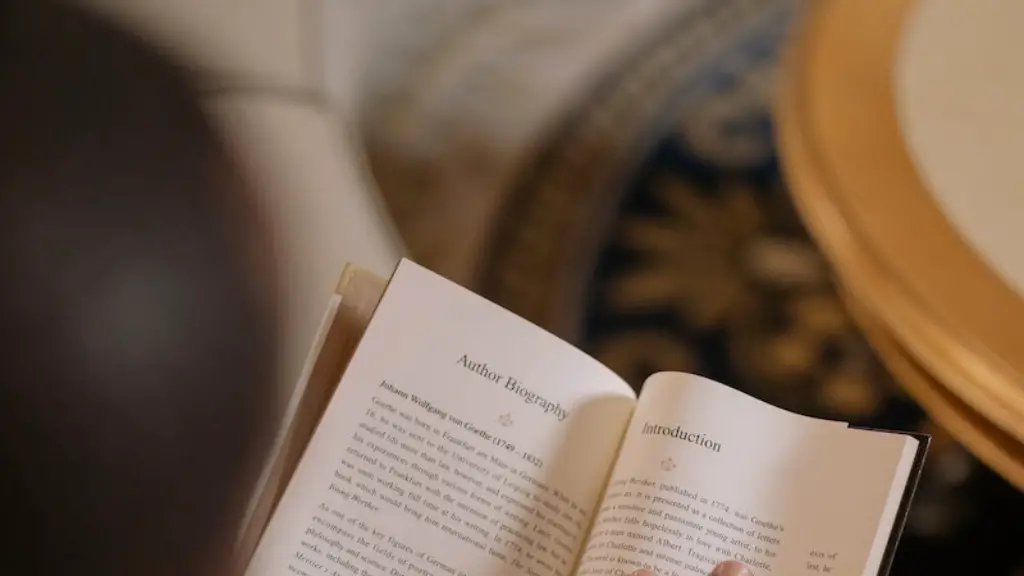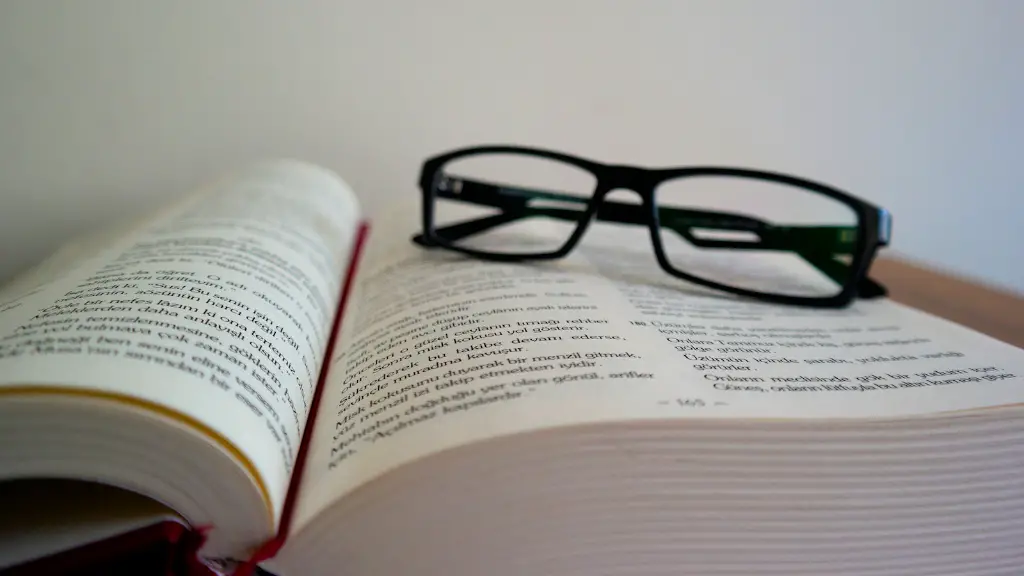What is a Regular Meter in Poetry?
Poetry is a powerful way to express emotion and convey meaning. Through its usage of meter, poem writers are able to create a rhythm that drawns readers in and can create a cohesive structure for the work. A regular meter is a type of meter used in poetry in order to create a specific set of sounds, syllables, and words that are strung together to create a particular rhythm.
In general, meter is a measure of length in a line of poetry, often measuring the number of stressed and unstressed syllables. A regular meter has a clear and consistent pattern of these syllables in the poem. For example, a poem in iambic pentameter would always use an even number of syllables, with the second syllable being more emphasized than the first (da-DUM, da-DUM, etc).
The term regular meter may also refer to a specific type of meter called “common meter”. Common meter is a form of meter that is based on a four-line pattern of stressed and unstressed syllables, with a pattern that follows the lines “alternately long and short, long and short, long and short”. This meter is often used in hymns and other Christian poetry, but has been used in a variety of different styles of poetry over the centuries.
Regular meter can also be used to create a repetitive pattern in a poem or song. This type of meter is not necessarily as constrictive as common meter, but is often used to create a sense of rhythm and focus in the poem. Writers may use this type of meter to create structure, either by repeating key words or emphasizing certain syllables.
However, some poets argue that meter is not the only thing that makes a poem. The emotion behind the words and the distinct imagery created by the words must also be taken into consideration. Meter is simply one factor that contributes to the overall feel of the poem.
Understanding Stress in Poetry
In order to understand regular meter, one should have an understanding of the basic structure of poetry. Poets and writers of all kinds use a form of pen to create their works and communicate an array of meanings. Depending on the meter a poem is written in, it can either have a rhythmic beat or flow or sound choppy or disorganized—and understanding how the syllables and words are “stressed”, or emphasized, is important to understanding the meter and the impact of the poem.
When words and syllables are stressed, this means the rhythm is completed, creating a physical response from the reader. Through regular meter, poets are able to emphasize particular words and direct the attention of readers to the desired areas. For common meter, the emphasis is usually placed on the third syllable.
The way the poem is read also affects the emphasis and how it is received. A poem can sound different depending on the speed and tone that is used. Traditionally, meter patterns have been used to “train” readers to sound them out in the same way, thus creating a shared and specific experience.
Purpose of Meter
The primary purpose of meter in poetry is to create a specific experience for readers and affect the emotion and feel of the piece as a whole. It is believed that certain meters stimulate different emotions and opinions in readers, though not all researchers agree.
When a writer uses regular meter, they are looking to create a specific rhythm and pattern that readers are likely to recognize and remember. This is why meter is often used in traditional and well-known works, as the readers automatically associate the meter with the poetry style or the author itself.
However, not all poets use regular meter in their works. Poems can be constructed using any type of arrangement or arrangement of syllables and words. There is no “right” or “wrong” way to craft a poem, and different poets prefer to use different methods of expression to communicate different emotions and messages.
The Many Kinds of Meter
In addition to regular meter, there are many other types of meter that a poet can use. While regular meter is the most common, many poets use different types of meter in their works to create a unique texture and sound.
One example is trochaic meter, which uses strongly emphasized short syllables followed by weakly stressed longer syllables. This type of meter is often found in nursery rhymes, especially in children’s literature. Another example is anapestic meter, which is composed of two unstressed syllables followed by a stressed syllable. This type of meter is often found in humorous poetry, and is distinct from the more formal poetic meters.
Many poets also choose to break the rules and combine different types of meter in order to create their own unique form. This type of poetry, called “free verse”, allows the poet to experiment and explore different patterns and rhythms in order to create a unique piece of art.
The Place of Regular Meter in Poetry
Regular meter has been the foundation upon which many famous works of poetry have been built. It has been used by well-known poets such as John Milton, William Blake, and Alfred Lord Tennyson, as well as modern poets such as T.S. Eliot and William Butler Yeats. Many of these poets used regular meter in order to create a timeless classic that would last for centuries and be remembered for generations.
Regular meter can also be used to create an emotional or passionate piece of poetry. Meter is often used as a means of imposing a feeling of rhythm and structure, often enhancing the emotions and power of the words. Meter can also be used to create a musicality to a piece of poetry and often helps to engage the reader and create a strong connection to the poem.
Using Meter To Connect With a Poem
Using regular meter in a poem allows readers to be drawn in and become part of the poem. Meter can be used to create a sense of unity, allowing readers to enter the poem and connect with it on an emotional level. It is also a way of sharing experiences, as meter helps to create an atmosphere that can be associated with different memories and feelings.
Regular meter is an essential component of poetry and is used in a variety of forms and styles. By understanding the basics of regular meter and how it works, readers can better understand the power of poetry and the beauty that can be created with words and rhythm.
Expressions in Poetry
Expressions are ways of conveying emotions, thoughts, and ideas through language. Poets use expressions to bring their work to life, emphasizing certain words and phrases to convey the meaning behind their work.
Different types of expressions can be used in different forms of regular meter. For example, in common meter, expressions can be used for emphasis or for contrast. Expressions can also be used to create the feeling that the poem is not only about one thing, but about the many different interpretations that can be taken from it.
Expressions can be used to create a sense of rhythm and unity throughout the poem, creating a cohesive structure and allowing the poem to flow effortlessly. They can also be used to add depth and color to the poem, creating a feeling that the poem is more than just words, but an experience that readers can connect with.
Emotional States Through Poetry
Poetry can be used to evoke certain emotions, allowing writers to communicate feelings and ideas in a unique and powerful way. By combining words and regular meter, poets are able to create an atmosphere that evokes certain emotions in readers.
Expressions and regular meter are particularly effective in conveying strong emotions, as the structure of each poem can create a tone and evoke certain feelings. Regular meter can be used to create an atmosphere of anticipation and suspense, while also bringing forth powerful emotions of joy, sorrow, hope, and despair. By using different forms of meter, a poet can use expressions to deepen the overall emotional impact of their poem.
Regular meter is an important tool for poets, as it can be used to create a specific experience for readers. It allows poets to craft poems with a rhythm and pattern that readers can identify, connect with, and remember. When used in combination with expressions, regular meter can also be used to evoke emotional states and convey powerful ideas.


